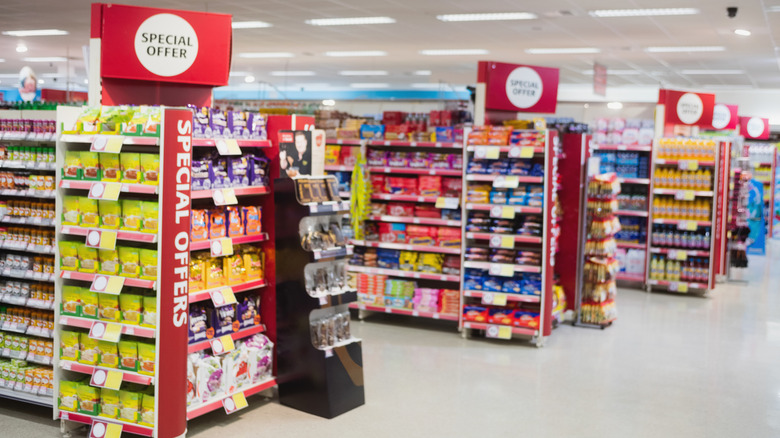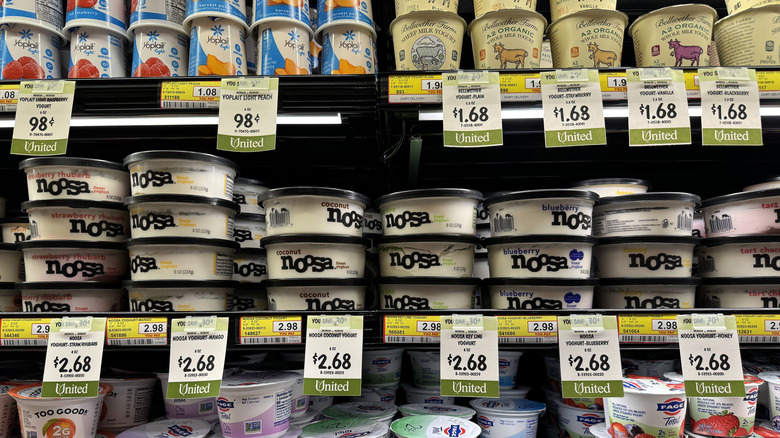Grocery Store Sales Are Tricking You Into Spending More Money. Here's How
It doesn't take a genius to know that people love getting a good deal on the food they buy from the grocery store. With grocery prices remaining high in the years since the COVID-19 pandemic, consumers have needed to find ways to save money, and utilizing store-specific sales and digital coupons has been a popular tactic in doing so.
However, as is the case with most things in life, not all sales are the same. While some sales might save you quite a lot of money on staple items you go through quickly, like milk or soda, buying a specific brand purely because it is on sale is not always the wisest way to go about shopping at the grocery store.
If you are a pro at finding the most cost-efficient brands and foods, then you're probably well aware of all this, but if you're someone who is having a hard time being frugal at the grocery store, you cannot allow yourself to be swayed by the fact that a product says it's on sale. Instead, you must analyze a product's worth – regardless of whether it's on sale or not — and see if there's a cheaper alternative.
How to know when a sale is worth it
So, as was alluded to previously, just because an item is on sale doesn't mean it's worth purchasing. The most obvious example of this is a matter of personal taste. If you don't like dumplings but see that dumplings are on sale, don't purchase them just because they're cheaper — you still won't like them regardless of how much they cost.
The more intricate aspect of determining whether a sale is worth it comes down to the price itself. Oftentimes, stores will put a high-priced brand on sale in an effort to sell more of it due to high supply and low demand. However, you will often find that the high-priced products that are on sale are still far more expensive than cheaper alternatives, many of which don't differ significantly enough to justify the price difference.
Similarly, keep an eye on the sizes of what you're buying. Even if you don't plan on buying items in bulk, comparing bigger and smaller amounts of any given product can provide a great indication of which brand gives you the most bang for your buck. To do this, all you need to do is look at the unit price — sometimes referred to as price per ounce, depending on what you're buying — on the shelf label to see what product is more cost-effective. As you will find, the answer isn't always the one that is marketed as being on sale by the store.

